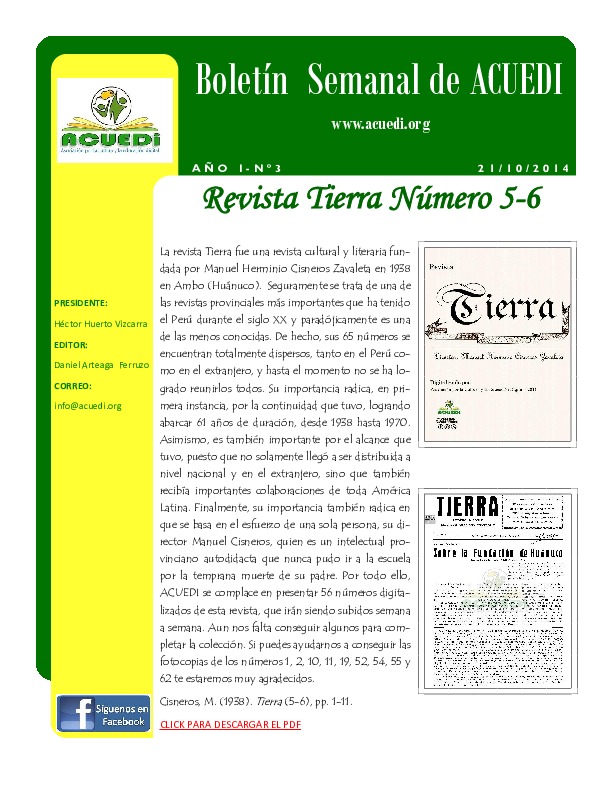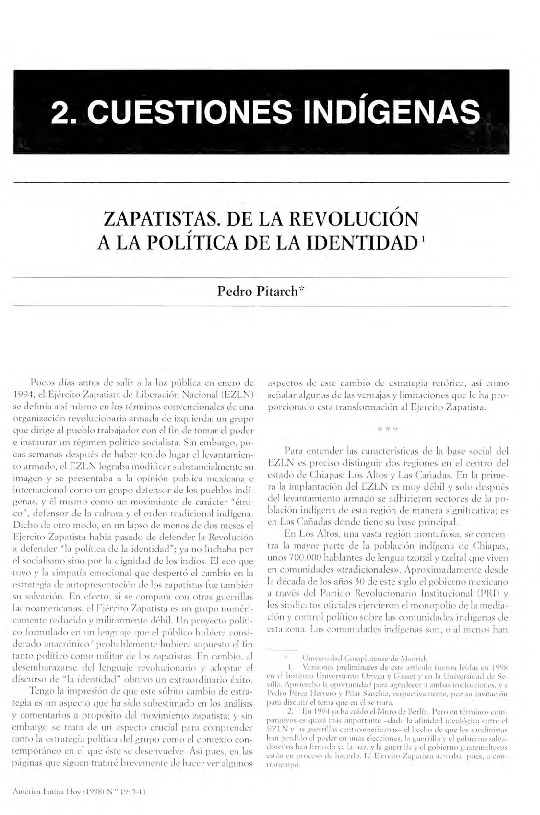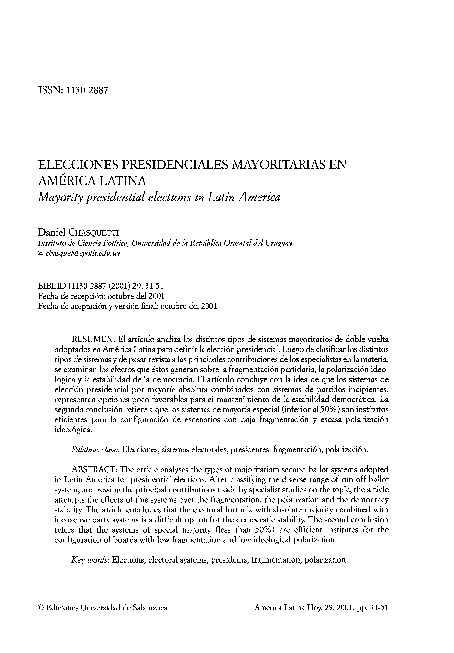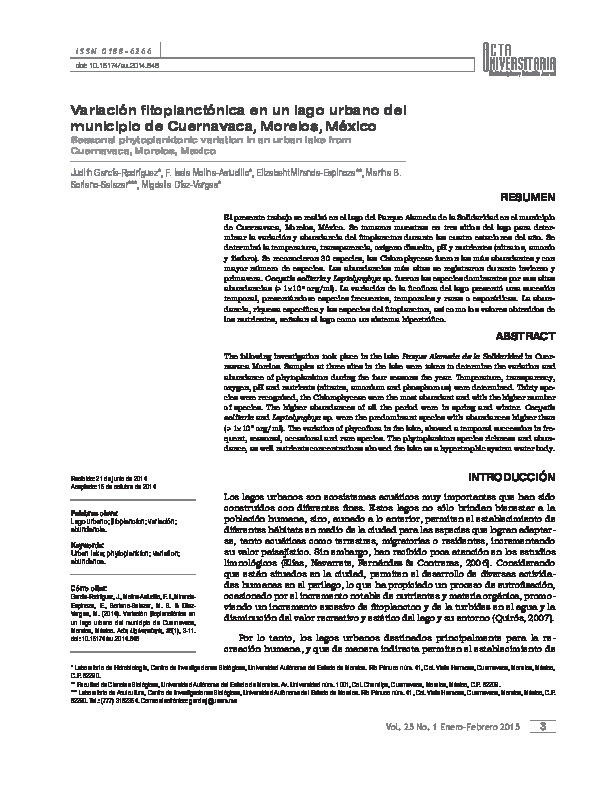Textos
Texto
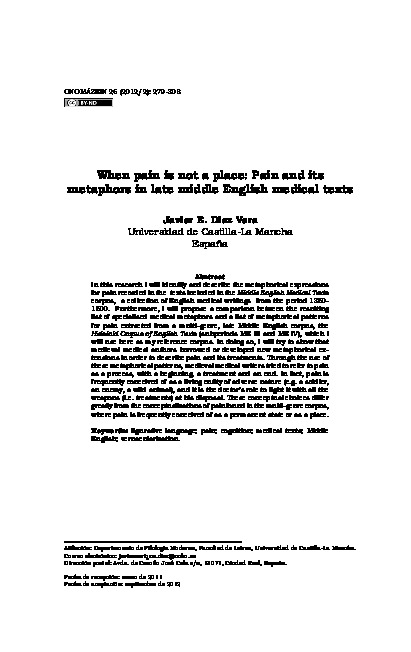
When pain is not a place: Pain and its metaphors in late middle English medical texts
Descripción
In this research I will identify and describe the metaphorical expressions for pain recorded in the texts included in the Middle English Medical Texts corpus, a collection of english medical writings from the period 1350-1500. Furthermore, i will propose a comparison between the resulting list of specialised medical metaphors and a list of metaphorical patterns for pain extracted from a multi-genre, late middle english corpus, the Helsinki Corpus of English Texts (subperiods me iii and me iV), which I will use here as my reference corpus. In doing so, I will try to show that medieval medical authors borrowed or developed new metaphorical extensions in order to describe pain and its treatments. Through the use of these metaphorical patterns, medieval medical writers tried to refer to pain as a process, with a beginning, a treatment and an end. in fact, pain is frequently conceived of as a living entity of adverse nature (e.g. a soldier, an enemy, a wild animal), and it is the doctor’s role to fight it with all the weapons (i.e. treatments) at his disposal. These conceptual choices differ greatly from the conceptualizations of pain found in the multi-genre corpus, where pain is frequently conceived of as a permanent state or as a place.
Díaz Vera, J. (2012). When pain is not a place: Pain and its metaphors in late middle English medical texts. Onomázein, nro. 26, pp. 279-308.
Categorias:
Colecciones:
Recuerda
La cultura y la educación necesitan de tu apoyo activo.
Información del autor
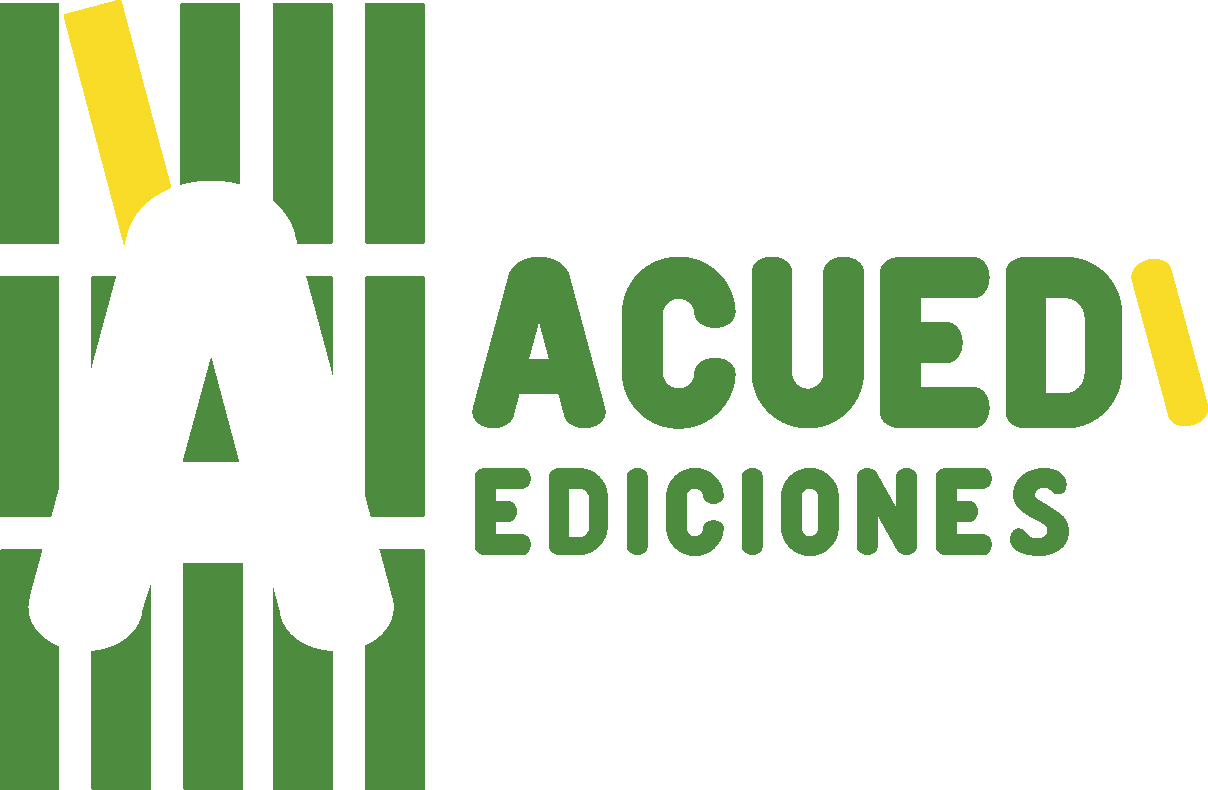
ACUEDI
ACUEDI son las siglas de la Asociación por la Cultura y Educación Digital. Somos una asociación civil sin fines de lucro, con sede en Lima (Perú), fundada en noviembre del 2011. Nuestro principal objetivo es incentivar la lectura y la investigación académica, especialmente dentro de espacios digitales. Para ello hemos diseñado una serie de proyectos, todos ellos relacionados entre sí. Este es nuestro proyecto principal, nuestra Biblioteca DIgital ACUEDI que tiene hasta el momento más de 12 mil textos de acceso gratuito. Como tenemos que financiar este proyecto de algún modo, ya que solo contamos con el apoyo constante y desinteresado de la Fundación M.J. Bustamante de la Fuente, hemos creado otros proyectos como ACUEDI Ediciones, donde publicamos libros impresos y digitales, y la Librería ACUEDI, donde vendemos libros nuestros y de editoriales amigas ya sea mediante redes sociales, mediante esta plataforma, en eventos o en ferias de libros.ACUEDI
